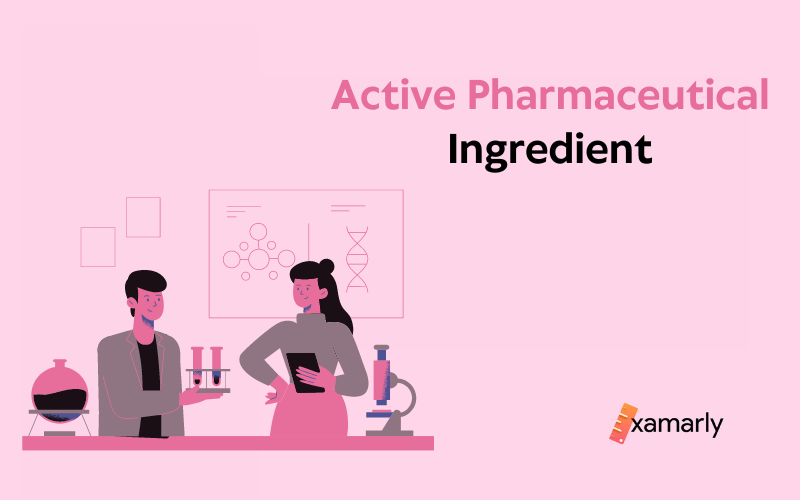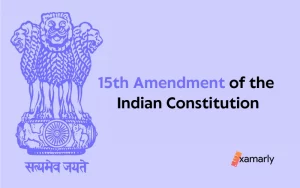An Active Pharmaceutical Ingredient or API is a chemical compound that is an active component in medicine, pesticide, or biological drug. This ingredient can also be called an “active ingredient” or “bulk active” and can be used in natural products.
Simply put, it refers to the components of medicine that lead to the desired outcomes. Paracetamol, for instance, has paracetamol as its API.
Apart from the active pharmaceutical ingredient definition, this article will help you to understand how APIs are used to make medicine. You shall also explore which significant steps were taken by the government to facilitate and promote the production of these medicines within India to reduce dependency on foreign nations.
This article will help you in your UPSC Exam preparation.
- What Is Active Pharmaceutical Ingredient?
- Types Of Active Pharmaceutical Ingredients
- Components Of Medications
- How An APIs Is Made?
- Leading API Manufacturers And Outsourcing
- Regulation And Inspection Of Active Pharmaceutical Ingredients
- Bulk Drug Parks Scheme
- Production Linked Incentive (PLI) Scheme
- What are the Effects of the Covid-19 pandemic on the Indian Pharmaceuticals industry?
- How India Lost Its API Market to China?
- Conclusion
- FAQs
What Is Active Pharmaceutical Ingredient?
- The term active pharmaceutical ingredient is the abbreviation of API, which refers to the chemical component or biological drug that has the intended effect of a medication in curing an illness.
Examples of API are Acetaminophen, Insulin, and glucose. - Crocin contains paracetamol, an active ingredient (API) that relieves body aches, fever, and other symptoms. Different APIs can be used for different purposes in different medicines.
- APIs can be found as pills, syrups, or liquids in many dosage forms. They contain the active ingredient (API) and other secondary ingredients called Pharmaceutical excipients, also called inactive substances.
- These excipients serve as carriers for the active ingredient.
- There are a few different fixed-dose combination medicines, but the most common ones contain two or more active ingredients in a specified ratio.
- These medicines with two or more active ingredients are used to treat multiple conditions simultaneously or lower each ingredient’s doses to reduce side effects. This results in fewer medications for the patients and cost-efficient manufacturing for the company.
Types Of Active Pharmaceutical Ingredients
Active Pharmaceutical ingredients (APIs) can be broadly divided into synthetic and natural APIs.
- Synthetic APIs may be further subdivided into novel and generic forms depending on how they are made. Synthetic APIs are short for small molecule drugs. They are the foundation of many pharmaceutical products in the market.
- Synthetic APIs are used to manufacture many drugs like diphenhydramine, aspirin, etc.
- Synthetic APIs are more stable and can be found in greater concentrations. In addition to branded prescription drugs, the market for APIs is segmented by business mode and synthesis type.
- Natural APIs are utilized in the production of biologics. Biologics are medications made from living cells. They are also gaining traction in the API pharma market.
- Examples: Humira, Remicade, Rituxan, and other Natural Chemical API drugs.
- Though Natural API drug products are gaining traction in the API pharma market, small drug molecules (Synthetic APIs) continue to dominate the market.
Components Of Medications
There are broadly two components included in the medication. These are active pharmaceutical ingredients (APIs) and excipients, which are inactive ingredients. The main excipient is the drug carrier, such as mineral oil or petroleum jelly.
- The Active pharmaceutical component (API), the medication’s main ingredient, comprises raw materials. Chemical substances used as a base to create an API are referred to as raw materials. The active ingredient in a pharmaceutical drug, also known as an active pharmaceutical ingredient (API), is the component in the medication that has beneficial effects experienced by consumers. The number of raw materials needed to make an API varies depending on the dosage requirements of the medical condition being treated.
- Excipients are substances used to make dosage forms that can reduce the number of doses or improve drug delivery to a specific region in the gastrointestinal tract where drug absorption is highest. They are the inactive component of medication that serves as a vehicle or medium for a drug or other active substance.
- Excipients can be added to drug formulations to help improve the API’s taste, appearance, and stability. They can also help modify drug absorption and pharmacokinetics. Additionally, by extending the expiration date, excipients help overcome the API’s limitations in terms of manufacturability.
- Example: Disintegrants, Glidants and Lubricants such as Stearic acid and its salts
How An APIs Is Made?
- The API production process has more than ten stages, and many types of intermediates are used to produce APIs. Each phase transforms the substance into an API. These stages can be broadly categorized into the following steps.
- Feed Handling: The API manufacturers must first acquire suitable raw materials to make APIs.
- Reactions: The raw materials undergo several intermediate processes or testing to be transformed into APIs. Depending on the chemical makeup of the API, production can be done either through chemical synthesis or biotechnology.
- The chemical process of producing active pharmaceutical ingredients includes loop reactors, batch reactors, and specialized batch autoclaves, which are all types of biotechnology used in the production of API. Fermentation is a type of biological process that imitate reactions within living organisms.
- Recovery: After the initial reaction, the released product contains APIs and other by-products. These by-products are then separated from the APIs and recovered using chromatography, nanofiltration, ultrafiltration, distillation, etc.
- The API is then purified to a high level. This is done to ensure that the API meets the required quality criteria. These products are then used to make pharmaceutical drugs.
- APIs potency ( drug quality ) and strength of each API are determined by the manufacturer using a set of standards. But it can differ significantly from brand to brand.
Leading API Manufacturers And Outsourcing
- Biocon, India’s largest biopharmaceutical company is a global leader in API manufacturing and serves over 1200 pharmaceutical clients across 100 nations. Biocon has been in the pharmaceutical industry for over two decades.
- Reported to be the 3rd largest in the world, the Indian Pharmaceutical industry is valued at $50 bn. India contributes 3.5% of total drugs and medicines exported globally to over 200+ countries.
- Most major pharmaceutical companies are headquartered in Europe or the United States, but the production of API is primarily outsourced to emerging economies. India and China are the top two API manufacturers.
- India’s pharmaceutical industry is booming, and the country is the world’s leading supplier of generic medicines. What has worked for Indian companies is their ability to reverse engineer drug formulations and produce cheaper medications, thus creating a global and domestic market. India also has some of the lowest manufacturing costs in the world.
- Dr. Reddy’s Laboratories Ltd, Aurobindo, Cipla, Ranbaxy, and Sun Pharma are the few top Generic Drugs and API manufacturers in India, while Pfizer, Novartis, Sanofi, and Boehringer Ingelheim are global manufacturers based in The US, Switzerland, France, and Germany respectively.
Regulation And Inspection Of Active Pharmaceutical Ingredients
- An API is a chemical component that helps the medicine stay stable and control its absorption. It must be safe for the patient. Before they can sell their products, drug manufacturers must prove that their products are effective.
- Regardless of the source of the ingredients, the companies are legally obligated to adhere to stringent safety and quality control measures.
- The APIs manufactured in India and China for distribution in the US must go through a regulatory process by the FDA to be approved for use. This is necessary to maintain safety and efficacy standards. A similar approach is observed for the medicines made for distribution in Europe, overseen by The EMA ( European Medicines Agency ).
The Strength And Quality Of An Active Pharmaceutical Ingredient
- Depending on how drugs are manufactured, there are many ways to express strength and analysis for drugs.
- Recently, The Food and drug administration (FDA) adopted automatic validation rules to validate drug listings and the safety of drugs. Food and drug administration (FDA) standards for reporting strength data should be followed.
- An API must meet specific criteria while maintaining standards per WHO GMP (Good Manufacturing Practices). The pre-qualification evaluation process includes assessing the master file for consistency and compliance with all WHO norms and standards during regular inspections. It will also aid as a reference standard for production and quality assurance.
- The quality of an active pharmaceutical ingredient (API) is essential to a drug’s safety and effectiveness. Unsafely manufactured drugs can lead to adverse health outcomes. In many countries, active ingredients have been regulated by the Food and Drug Administration.
Bulk Drug Parks Scheme
The Indian government has launched a scheme to promote the country’s pharmaceutical industry. The Bulk Drug Park Scheme (BDP) initiative of the Ministry of Chemicals and Fertilizers aims to create a world-class infrastructure to produce bulk drugs and pharmaceuticals.
- The scheme offers a range of benefits to companies that set up manufacturing facilities in designated Bulk Drug Parks, including tax breaks, subsidies on power and water, and preferential treatment in government procurement.
- The government also provides financial assistance to companies to set up common facilities such as wastewater treatment plants and centralized laboratories. The Bulk Drug Park Scheme is a part of the government’s more comprehensive ‘Make in India’ initiative, which aims to boost the country’s manufacturing sector and make it a global hub for manufacturing.
- This scheme aims to encourage the domestic production of essential intermediates and APIs, increase competitiveness, and improve the quality of bulk drugs produced in India. It aims at enhancing the product’s quality through increased access to standard testing and value addition.
- Credited as an initiative in the right direction, It also aims to meet environmental standards, reduce costs, and achieve economies of scale through innovative Waste Management systems.
Production Linked Incentive (PLI) Scheme
The Production Linked Incentive or PLI scheme is a policy that provides financial incentives to companies for incremental sales from products manufactured domestically. The scheme is designed to attract foreign manufacturers to build units in India and facilitate local companies to expand their existing manufacturing operations. The scheme also aims to provide more jobs and reduce the country’s reliance on other nations for imports.
As part of India’s Atmanirbhar Bharat Campaign, The PLI scheme was introduced for the Large Scale Electronics Manufacturing sector in April 2020. Towards the end of 2020, the scheme was expanded to other sectors.
- The PLI scheme for pharmaceuticals was introduced in 2020 and will run for five years until 2029. It is estimated that during this time, there will be a rise in incremental sales and exports in the order of Rs.2,94,000 crore and Rs.1,96,000 crore, respectively.
- The scheme’s primary objective is to increase investment and production in India’s manufacturing capabilities, thereby helping diversify high-value goods in the pharmaceutical industry. A secondary objective of this initiative is to lift global champions from India with the potential to grow in size and scale using leading-edge technology, thereby penetrating the global value chains., thereby penetrating the global value chains.
- India depends on 35 APIs sourced from China for 90 percent of its current needs. Under the PLI scheme, the government wants to facilitate the domestic manufacturing of these drugs.
- The program will also require companies from India to lower the costs of the chemical manufacturing process. According to the Department of Pharmaceuticals, this incentive scheme will boost domestic manufacturing by offering incentives to companies that produce critical products.
What are the Effects of the Covid-19 pandemic on the Indian Pharmaceuticals industry?
The coronavirus pandemic and its resultant lockdown badly affected all significant sectors of the economy, but it has become a boon in disguise to the Indian pharmaceutical industry. Though the Covid-19 pandemic has had some adverse effects on the pharmaceutical business, such as importing active pharmaceutical ingredients from China, it has also created new opportunities in India.
India’s API industry faces competition from China, which can provide these products at a lower cost. This has caused difficulty for domestic pharmaceutical companies that require specific key APIs for manufacturing. India’s importation of around 70% of its API from China has put the nation’s health security at risk due to the heavy dependence on a single source.
In light of the Pandemic, The GOI implemented relaxations on technical and financial obstacles to facilitate increased API production within the country to reduce dependency on China.
An Incentive package of Rs. 13.76 billion was proposed to facilitate domestic manufacturing of critical starting materials, drug intermediates, APIs, and medical devices.
NITI Aayog and several representatives of the Indian Pharmaceutical sector have suggested progressive steps like fostering approvals of pharmaceutical infrastructure developments, getting permission from the environment ministry, and financial exceptions for developing pharmaceutical hubs to promote market growth.
Further Readable Articles:
| Asian Development Bank |
| Asian Infrastructure Investment Bank |
| Asian Clearing Union |
| Aditya L1 Mission: Maiden Solar Mission By ISRO |
How India Lost Its API Market to China?
India’s API business has been growing steadily for the past few years, but it’s not enough to compete with China. While the Indian market is still struggling to find affordable APIs to meet its needs, a few factors are helping China capture the API market.
China’s government policies and incentives have made it easier for Chinese manufacturers to establish bulk medicine manufacturing facilities. China quickly achieved better cost structures once it entered the API market. Economies of scale and government funding are the key factors behind this growth.
Conclusion
The active pharmaceutical ingredient (API) is the bioactive substance in a medication that causes the desired effect. APIs are not only used in cancer medications but also in other high-quality medications that treat conditions such as cardiology, CNS, and neurology.
APIs can make healthcare more sustainable by offering more innovative products or finished dosage form drugs. Patients will have easy access to treatment and improve the overall quality of care.
The Bulk Drug Parks Scheme and The Production Linked Incentive ( PLI ) Scheme are two initiatives to ramp up the production of APIs in India.
FAQs
What Functions Do Excipients Serve?
Excipients, or inert elements in pharmaceutical goods, are crucial parts of therapeutic products because they help with drug distribution, encourage solubility, enhance flavor, and generally enable the conversion of active pharmaceutical materials into usable dosage forms.
Name Some Of The Top Manufacturers Of Active Pharmaceutical Industries?
Aurobindo Pharma, Ipca Laboratories, Aarti Drugs, Dr. Reddy’s Laboratories, and Morepen are some of the manufacturers of API.
Who Is The Leading Manufacturer Of Active Pharmaceutical Ingredients?
With 44% of the world’s total production of active pharmaceutical ingredients, China is the greatest manufacturer in the world. India, which contributes 20% of the world’s output of API, is the second-largest producer of API in the pharmaceutical industry.
How Many Sectors Are Included In PLI?
In order to increase exports, boost investments, integrate India into the global supply chain, and decrease reliance on imports, the government has introduced Production Linked Incentive (PLI) schemes in 14 sectors.






